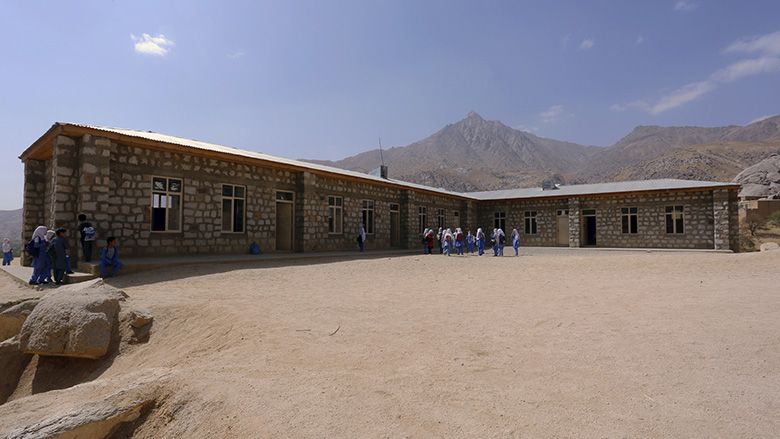Students attend classes in shifts, and the school has seen nearly a tripling of new enrollment since the building was constructed. “After the new building was built by EQUIP, the enrollment of children went up significantly,” affirms Kobra 34, the teacher.
Students studied in an unconducive learning environment, in a mosque or tents and under trees with few teaching materials, until the school building was completed six years after its founding. “When the School was established in 2004, children did not have a school building,” says Kobra. “It was very noisy and the quality of teaching was lacking. We had just blackboards, nothing else.” The school building now houses proper desks, blackboards, and other materials, sparking a renewed enthusiasm for learning among the students.
“Before the school was built, I studied in a mosque,” recalls Gulsum, 18, an 11th grade student. “There were four classes in one room and it was so noisy. Now, we don’t have any noise. We are no longer affected whether the weather is warm or cold, we are just learning our lessons in our classrooms.”
EQUIP, now in its second phase, seeks to increase equitable access to quality basic education, especially for girls. It is implemented by the Ministry of Education and was first funded by the International Development Association (IDA), the World Bank Group’s fund for the poorest countries. The Afghanistan Reconstruction Trust Fund (ARTF) has taken over funding as co-financier of the project.
Improving educational infrastructure and quality
In Daykundi Province in central Afghanistan, EQUIP is constructing schools by awarding Infrastructure Development Grants and improving the quality of education through Quality Enhancement Grants (QEG) of between $2,000 and $5,000, and engaging the community by establishing school shuras, or councils.
Since 2007, EQUIP has built 63 schools across all eight of the province’s districts. EQUIP programs have supported 350 of the 376 schools in the province. “We work with the aim to improve the development of education and provide equal opportunities for all children,” says Mousa, a program officer for Daykundi Province.
At Sari Nili High School, EQUIP has established a school management shura, which holds monthly meetings, bringing together the administration, teachers, parents, and other community stakeholders to solve any problems. For example, a well-off community member resolved the issue of inadequate space for the 700 students by providing funding for an additional six classrooms after hearing about the problem from the shura.
Despite vast improvements, Sari Nili High School still struggles with many of the same challenges of schools across Afghanistan. “The students are very good and dedicated to learning,” says Nasrullah, 22, a teacher at the school. “But we do not have good quality teaching materials, computers or science laboratories, or a well for clean drinking water. There is a lot to be improved.”
Nonetheless, the EQUIP funding has improved the physical conditions of the school, and has vastly improved the learning environment for local students. “We hope our school qualifies for a QEG so that teaching and learning materials are further improved,” Nasrullah adds.

